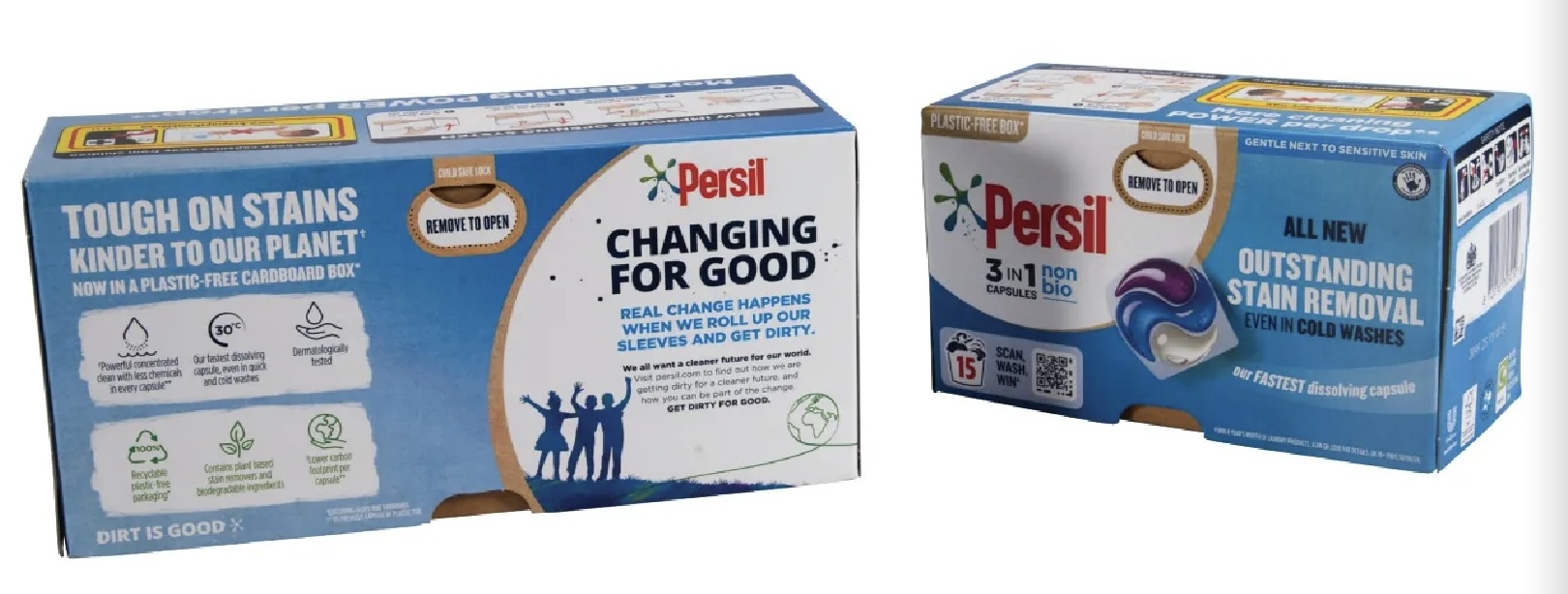Update on Paperboard Packaging Sustainability Trends
- Published: June 27, 2024
By Brian Westerlind, Director of Industry Affairs, Paperboard Packaging Council
In an era marked by environmental awareness, industries are increasingly turning to sustainable solutions like paperboard packaging. Folding cartons and rigid boxes offer product protection, numerous design capabilities and, of course, the biodegradable nature that brands and consumers are looking for today. This article will cover trends in sustainable paperboard packaging design, recyclability and a new initiative from the Paperboard Packaging Council (PPC) to help the industry think more deeply about these critical issues.

Paperboard Packaging as a Sustainable Substitute
From food products and cosmetics to electronics and pharmaceuticals, numerous industries choose sustainable paperboard every day. Specifically, paper-based packaging has emerged as a substitute for non-biodegradable and/or petroleum-based materials. Unlike such materials, paperboard is manufactured with renewable wood pulp from sustainable and certified1 forests — which are planted and replanted over and over again. Additionally, paper can be recycled about seven times, adding to its earth-friendly character (more on recycling in the following section).
According to Fastmarkets RIST's 2023-24 Trends: Industry Outlook & Market Data Report2, "Plastic substitution and environmentally friendly packaging trends should provide a tailwind for carton growth... In fact, recent decisions by some of the largest fast-food companies and municipalities across the country suggest that paperboard packaging materials are poised to benefit from their environmentally friendly profile."
One excellent example of paperboard substitution shined during the PPC's 2023 North American Paperboard Packaging Competition: Graphic Packaging International3 took the Sustainability of the Year Award4 for its reformulated paperboard design for Unilever laundry detergent capsules replacing HDPE.
The forward-thinking packaging aligns with Uni-lever's Clean Future initiative, focusing on sustainability in product formulation and packaging while promoting brand identity. Crafted from 100 percent recyclable materials, the carton design has a user-friendly opening mechanism that is both childproof and easily accessible for adults. In addition, an intelligent folding process and absorbent pad provide reliability and moisture resistance, and unlike plastic tubs, they can be efficiently stacked. Importantly, Unilever's Life Cycle Assessment of the new packaging demonstrates a minimum 20 percent lower carbon footprint compared to previous packaging while preventing over 6,000 tons of plastic waste annually!
Paper & Paperboard Packaging Recycling
One of the paper packaging industry's biggest strengths is recyclability. According to the American Forest & Paper Associations5 (AF&PA), 67.9 percent of paper was recycled in the U.S. in 2022. Additionally according to AF&PA, 94 percent of Americans have access to community paper recycling programs, and about 80 percent of U.S. paper mills use recycled fiber.
Paperboard recycling begins both at industrial facilities and at residential curbside with the separation of paperboard packaging from other waste materials. This collected paper waste is then transported to recycling facilities, where it undergoes a series of processes to be transformed into recycled paperboard. The recycling process involves removing non-fiber materials, such as adhesives and inks, before repulping and processing the fibers into a new material suitable for manufacturing packaging or other paper products. The recycled content can be blended with virgin fibers to create a balance between sustainability and product performance.
We recommend that all packaging designers and brands review AF&PA's Design Guidance for Recyclability6 when considering paperboard packaging. PPC and other industry stakeholders offered insight into the making of this tool, which was created from survey data of paper mills throughout the U.S. and Canada that use recovered paper grades.
For example, the Guidance shows that a wide range of non-fiber elements do not adversely affect recyclability for recycled/unbleached boxboard, including water-based and water-soluble inks and dyes, UV EB inks, water-soluble adhesives, clay coatings, varnish coatings, polymer barriers, bioplastic barriers, metals and polymer windows. Designers can and should use this tool to build sustainability into their packaging from the very beginning.
New Sustainability Task Force at PPC
Beginning in 2024, PPC established a new Sustainability Task Force in response to increased interest in the topic. Although we have been addressing key issues all along, this is our first formalized effort to engage and educate members and external shareholders. While it is still early for the Task Force (which we think may grow into a larger committee), the small working group has agreed to monitor some of the following as it relates to folding cartons and rigid boxes: Recyclability and labeling requirements, compostability, extended producer responsibility, post-consumer content mandates, chemistry in packaging, ESG reporting requirements and European issues and rules that may affect the U.S.
Ultimately, the Task Force aims to keep members abreast of news, get them involved with issues as appropriate and create a library of internal resources exclusive to guide individual companies.
Paperboard packaging and recycling embody a sustainable approach to the packaging industry, aligning with the global shift towards environmentally friendly practices. As consumers and businesses alike recognize the importance of responsible consumption, the demand for eco-friendly packaging solutions continues to grow. Through continued innovation, education and collaboration, the paperboard industry can play a pivotal role in shaping a greener, more sustainable future.
2 https://paperbox.org/2023-24-trends-report/
4 https://paperbox.org/2023-top-awards/
5 https://www.afandpa.org/priorities/recycling
6 https://www.afandpa.org/statistics-resources/afpa-design-guidance-recyclability
About the Author
For over 90 years, PPC has served as the premier North American association for converters of paperboard packaging and their suppliers. PPC works to grow, promote and protect the paperboard packaging industry while providing its members with resources and tools to compete successfully in the marketplace. For more information, visit www.paperbox.org.












